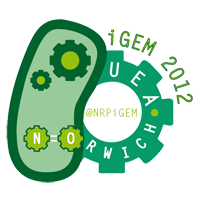Team:NRP-UEA-Norwich
From 2012.igem.org
(→NRP UEA iGEM Team 2012 Project Outline) |
|||
| Line 1: | Line 1: | ||
{{UEANRP}} | {{UEANRP}} | ||
| - | == '''NRP UEA iGEM Team 2012 Project Outline''' | + | |
| + | ==Find Us On...== | ||
| + | |||
| + | [[File:WikiTwitter.jpg | link=http://twitter.com/nrpigem]] [[File:WikiFB.jpg | link=http://www.facebook.com/pages/UEA-iGEM-2012/161749980625611]] [[File:WikiTum.jpg | link=http://ueaigem.tumblr.com]] | ||
| + | |||
| + | <br> | ||
| + | = '''NRP UEA iGEM Team 2012 Project Outline''' = | ||
[[File:LogoSmall.png|thumb|right|The NRP-UEA iGEM2012 Logo]] | [[File:LogoSmall.png|thumb|right|The NRP-UEA iGEM2012 Logo]] | ||
Revision as of 11:17, 16 July 2012
 "
"




